#this edit is significantly lower quality
Text


HOW DID I GET HERE


Alt banner versions
ok ok I can explain I had one of my random editing bursts and made this and used way too many effects and calmed down and only realised how wild I made these. And btw I managed to get higher quality clean versions of the door art because I edited them to make them transparent. I haven’t posted those edits yet because I’ve only done Amane and Mikoto’s so far and currently doing Kotoko’s (yes I’m doing all of my favorites first I’m biased) but wanted to screw around with them a bit and uhh here you go. I figured these would look nice as banners as well so I also cropped them and once again credit if you wanna use
#milgram#mikoto kayano#amane momose#Milgram edits#Also completely random request the door art I have for AKAAA is significantly lower quality than the rest and I can’t find a HQ one#So if any of you can find one of better quality than the 1200x1200 one I have pls do as the rest are 3000x3000
14 notes
·
View notes
Text
How to Add Images to Ao3
Since it's @steddiebang season I thought I'd do a quick guide on how to add images to your fics in case people don't know how!
First off, you need to use the "Rich Text" Editor on Ao3

Next, you need the url of the image you want to embed. This needs to be a direct link to the image (not the post of it on socials) the way to get this is to right click on the pic wherever it's posted and "copy image address" this will copy the direct link to the image
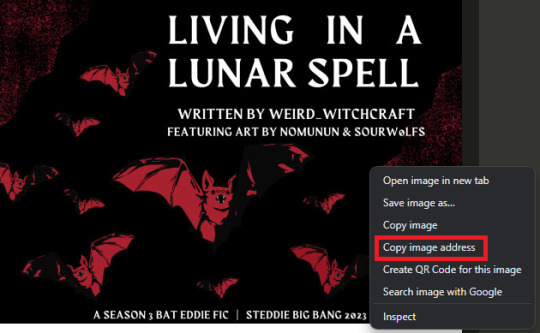

In the Ao3 Rich Text editor click the picture icon to "insert/edit image" paste the "source" url adjust width and height as needed
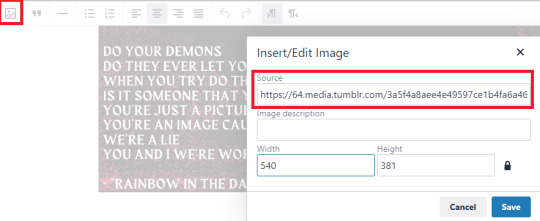
There you go! Image in your fic!
A few things to note: I copied this url from tumblr, the quality is significantly lower than the Ch1 image I already have in there. Since I haven't posted all my title cards on socials I posted them on imgur and set them to private. You could also post them on a private Pinterest board or another hosting site, you just need that url to the image address.
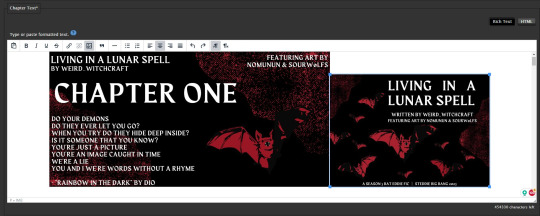
If you want the image to be centered (something i struggled with for a while) you can click next to it to select the text line it's sitting in and center it from there
Personally, when I embed art in fics I add a line underneath to link to credit the artist & the original post to encourage readers to engage with the art directly. You can do that in the rich text editor like so:
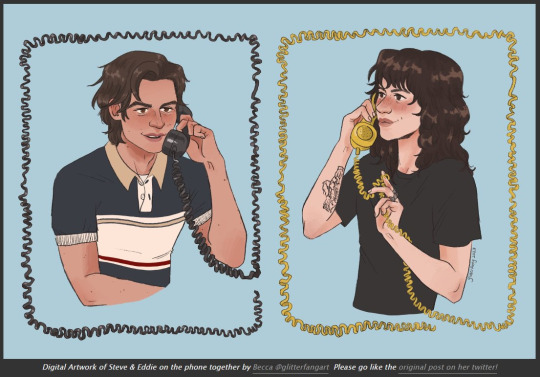
And cause i'm a stickler for crediting here's the link to this art by @glitterfang on Twitter & Tumblr

If you want to link anything in the Summary or Notes then you need to use html like this:
<a href="LINK URL" rel="nofollow">DISPLAY TEXT</a>
Okay! Thanks for coming to my ted talk, hope that helps at least one person!


62 notes
·
View notes
Note
hey, just wanted to let you know that salt licking post is basically completely made up. if you suspect that you might be low on sodium, get it checked. but our bodies do not tell us if we need more salt by making it taste good. too much sodium can be dangerous for your health and the post basically encourages ppl to ignore the medical reality of that.
You, uh... you're wrong, just FYI.
I mean, not about excessive salt intake being bad for one's health, that's true. Long term excessive salt intake (not occasionally, but consistently) seems to exhaust your body's salt-balancing systems, leading to, among other things, high blood pressure and its attendant cardiovascular diseases.
And most people living in the developed world eat a long term excess of salt. A rough estimate of the ideal range of daily salt intake is between 0.5g and 5g. People in the US, on average, eat double that amount of salt per day. Which, yes, is a massive cardiovascular risk!
That's perfectly correct.
It's also correct that the human appetite for salt increases dramatically after a salt-losing activity, and in other low salt situations.
1, 2, 3, 4, 5, 6
The specific way that increased salt appetite manifests varies widely. Some people (myself included) report salt becoming slightly sweet, most report it becoming ~indefinably delicious~, some people report a savory or meaty quality, or even salt becoming tasteless-yet-desirable, etc etc.
You are also correct that people who experience a new, unexpected salt craving or have other reasons to suspect a salt deficiency should seek professional medical confirmation.
But a fucking lot of people already know they have it. Salt deficiency is ~easy to diagnosis, and hard to manage~. In part because salt is present in a lot of unexpected places, so it may be necessary to supplement intake one day and not the next even though you haven't eaten anything "particularly salty."
The ability to very roughly spot-check your salt appetite with a simple taste test is validated experimentally, clinically and anecdotally by people with various conditions that cause salt problems. It's as a simple, low risk method of managing this known issue.
Licking a bit of salt off your palm is significantly lower risk than waiting until more extreme symptoms of known conditions set in, given those symptoms usually include confusion, vomiting, dizziness, and fainting.
Obviously if it's novel, yeah, go to a doctor when you are able to do so.
But if you've been dealing with salt deficiency since you were an infant, having a simple trick is actually very helpful.
Significantly more helpful than someone busting in to "correct" me inaccurately while making a lot of assumptions about how much disabled people know about our own bodies.
I mean for fuck's sakes, what kind of fully abled person is so worried about being low in salt that they'd bother licking it off their hands in the first place?
That's not a behaviour they'll repeat, specifically because it'll fuckin taste bad.
Edited to add:
If you frequently eat plain salt and it doesn't taste like your tongue is pickling to death please tell your doctor! I promise you, eating plain salt it is Not A Normal Thing. You need to find out why your body is doing that.
This is "spicy bananas" all over again, people.
#5g of salt is approximately one teaspoon btw#If for some reason you need to limit your salt intake#And you also prepare all of your food in your own home#You can simply measure out a teaspoon of salt first thing in the morning#And then take pinches from that for seasoning your food throughout the day#So that you know you're not going over 5g#Additionally salt tastes 'saltier' when it's on the outside of food#Because more of the salt is contacting your tongue#So with the exception of boiling (pasta stew oatmeal etc)#You want to use salt only at the very end right before you eat#To maximize salt flavour while minimizing salt intake#You can also get a very small food safe spray bottle (like a 1 fl oz bottle)#And put your 1tsp of salt in it then dissolve it in water#So that you can lightly mist your foods before eating them#That way you get a more even salt coating that crystals and flakes of salt cannot provide!
336 notes
·
View notes
Text
Musings on some substances, rewrite edition.
CW for mentions of drug use/addiction, disordered eating, cancer, and a bit of unsanitary stuff/death.
Eridium
A purple crystalline-metallic substance created by the Eridians. Most commonly found in the form of either unrefined ore or rough clumped crystals.
In its ore form, eridium is safe to handle, but not particularly useful for anything. However, it should not be ingested, as it's full of toxic impurities.
Eridium refinement creates a byproduct known as slag. Slag is toxic, mutagenic and poisonous to all known forms of life, in addition to weakening metals and energy screens it comes in contact to.
In its refined form, eridium gains a strange quality. When it enters the bloodstream of a typical human, it provides a short-term feeling of euphoria and energy, similar to a conventional stimulant. Different forms of eridium provide highs of different lengths.
Despite this, refined eridium is still somewhat poisonous and slightly addictive. Prolonged eridium intake can cause anemia, muscle atrophy, fatigue and purple tints under the eyes.
Sirens have a completely different response to eridium: they are able to absorb it directly through their skin, and absorbing it empowers them significantly. Eridium intake also causes sirens to require less water, sleep and food.
However, eridium is also significantly more addictive to sirens, with physical dependencies being relatively easy to develop. This coupled with the lowered needs means that a sufficiently addicted siren can sustain herself entirely on eridium.
Eridium withdrawal symptoms vary. Normal humans may experience heart palpitations, general jitteriness, and insomnia. Sirens may also experience chronic pain, migraines, muscle pain and catatonia.
Deaths from eridium overdose are very rare. Deaths from eridium withdrawal are somewhat uncommon, but still present.
Eridium in all forms is highly caustic to Primordials. Even if it's a small patch of skin touching a piece of unrefined ore, it can cause severe burns. Slag has a slightly different effect - if injected, it causes Primordial flesh to agitate, contract and move erratically, which usually also causes small to moderate internal damage.
Additionally, when utilized properly, eridium can act as an extradimensional semiconducting medium, just like quartz is used in conventional computing. (You can use it to simulate Siren powers when powered properly and do all the crazy shit the Eridians did. Unfortunately, you have to cut the crystals in a highly specific manner, or else the results might be a bit chaotic. See NTftBL for an example.)
Core
A greenish crystalline substance, made out of Primordial excrement residue and/or dead tissue left to oxidize and decay for a sufficient amount of time. Usually found in raw crystals.
Very rare in the universe, primarily due to the Great Imprisonment (all the Primordials being stuck in Vaults and not pissing/dying everywhere). If it is found, it's usually in Primordial nesting/burial (the distinction is sometimes moot) grounds.
Extremely volatile and explosive.
Highly mutagenic and carcinogenic to humans and animals if taken directly.
However, if properly microdosed (mostly through small skin injections, for example tattoos with core infused ink), it can grant humans minor Bonded-like abilities, depending on the Primordial the core belongs/belonged to.
To Primordials and their Bonded, core acts in a somewhat similar manner as eridium to sirens: it enhances their extradimensional abilities temporarily. However, it cannot be directly absorbed and must be conventionally taken (through inhalation, injection, consumption etc.). The effect seems to be stronger on Bonded, but that may or may not be due to their abilities being inherently weaker than the Primordials they are bound to.
Core is non-addictive to those that are immune to its mutagenic effects, however excess intake can cause exhaustion (as their power is taken to the extreme a bit too often).
11 notes
·
View notes
Text
Aaaanyway on a more serious note,
THINGS I LEARNED THAT HELPED ME KICK MY DISORDERED EATING IN THE ASS: BMI EDITION
-BMI thresholds are arbitrarily harsh. There is some wiggle room both ways for what is too little and what is excess for almost everyone. How much wiggle room one has is unique to them, and affected by genetics. Very few people perfectly fit in the metric.
-BMI is used for gauging the height-to-weight ratio trends of a whole population, not individuals. (See above for why)
-Obesity is real, but that it should be characterized by significant excess of adiposity that can be traced to reduced quality of health and life rather than strictly by the number on the scale.
-On the flip side, signs of significant or prolonged undernourishment (looking at you, hair loss, "keto breath" and "can't lay down on bed because it bruises me") means you need more, BMI be damned even if you're at a supposedly "healthy" BMI.
-BMI is a horrible way to diagnose EDs because EDs are disorders of mental health, not disorders of weight. Weight can be a presentation factor, but the key is the disordered mentality. If your psychiatrist ever simply tells you "you're too heavy to have an ED" when you try to raise concerns without assessing anything else and it makes you spiral wanting to starve yourself harder and worsens your relationship with food, change psychs because that's malpractice.
-BMI is built on a small range of population diversity (read: White European Men Of Relatively Specific Builds) and then rounded down into nice numbers and then using that to retrofit for other ethnicities by "relative risk" and then rounding it to a nice whole number again. If you've ever been taught not to do double rounding in school, you'll know why this doesn't work - it's going to skew your accuracy, and BMI was, again, used to gauge trend. Trend is relative, but tying it to hard numbers and calling it an accurate image of the reality is just wrong.
-If your quality of life improves with a bit of extra weight (within reason) or if you need that bit of extra for your health (e.g. you're chronically ill and it is a good buffer for when you have flare ups and can't eat, and helps you bounce back after) you do it. The computer will always spit out the math and sort you into bins based on hard thresholds and it might flag someone whose BMI is 0.1 too high for "normal" range who is in reality thriving and tell them to lose weight, and it might ignore someone who is still 0.1 in the normal range who might have been experiencing abnormally rapid weight gain that they need investigations for. Or say, it could flag someone who is 0.1 into the underweight threshold who could be perfectly healthy, and doctors would try to tell them to gain weight.
-Also, weight fluctuations day to day mean that chances are if you are near one of the thresholds, you could swing between each side of it within hours of the same day. Not great for an obsessive mind.
-Asian BMI charts are also kind of skewed in the way that its lower thresholds also influence the East/Southeast Asian beauty ideal. Remember those Japanese weight loss ads where the after images were all labelled around ~35kg (77lbs)? Yeah. Or the trend of Chinese women wearing child-sized shirts as crop tops to show off how slim they are? Or the A4 paper waist trend? All bullshit. Nothing beautiful about being so obsessively thin and fragile you can't even be anything but a display porcelain doll without breaking.
Of course, all these points are being said because I used to obsess so hard about the actual number on the scale and the BMI chart and like. That didn't help anyone. Lately I've been doing significantly better (appetite's on a roll, I feel great, and honestly finally really learning to love my body rather than abuse it into thinness through undernutrition) and I figured these were the things I reflected on along the way.
3 notes
·
View notes
Text
#249: Finish More Things

And we’re past the 6-month mark. Now 2023 is closer than 2021. Have you started on the projects you want to get done this year? Have you finished them already? How is it going?
For me, 2022 has been the slowest year in maybe a decade. Often, I found it hard to focus enough to make meaningful progress. The next six months will be pretty busy if I want to hit my goals for the year.
I’m not too worried, though. Goals are just goals. Sometimes you hit them. Sometimes you miss. Sometimes the goals you set aren’t worth completing anymore.
What is a good goal anyway? Not in the management sense. Sure, specific and measurable goals are great, but that’s the easy part. How do you find a goal that’s worth working towards? How do you know that you’re working on the right story?
Well, you don’t. Nobody knows for sure. Even bestselling, traditionally published authors miss the mark sometimes.
Grand plans are great, but they aren’t really worth very much. Instead of getting hung up on that, I want to focus on a single goal for the rest of this year: finishing things.
Because I don’t have as much time as I thought I’d have, I’ll be focusing on smaller projects that I can finish rather than more ambitious ones that will bog me down because I don’t have enough time to see them through.
I’d rather finish 10 short stories than write 10 chapters in a book. You learn significantly more by taking something all the way over the finish line. When it comes to art, finishing more things almost always pays off.
Will you be a better photographer if you do 5 photoshoots or 50? Will you be a better poet if you finish 5 or 50 poems? Will you be a better artist if you finish 5 or 50 illustrations? Will you be a better songwriter if you finish 5 or 50 songs? Will you be a better writer if you finish 5 or 50 stories? You get the idea...
Some argue that if you work on 50 stories, you will spend less time on each, and they will be of lower quality than if you focused on five stories. That is, unfortunately, wrong. Creativity adds up. You grow as a writer with every finished story. Any proficient artist will do a better sketch in a minute than a beginner would in 3 hours. That applies to writing too.
Taking forever to write each story will prevent you from acquiring the experience needed to become proficient. It’s a vicious cycle.
When in doubt, finish more stories! There’s still plenty of time left in 2022.
About the Author
Hi, I’m Radek 👋. I’m a writer, software engineer and the founder of Writing Analytics — an editor and writing tracker designed to help you beat writer’s block and create a sustainable writing routine.
I publish a post like this every week. Want to know when the next one comes out? Sign up for my email list below to get it right in your inbox.
SUBSCRIBE
(I won’t spam you or pass your email to a third party. You can unsubscribe at any time.)
Past Editions
#248: Serious Procrastination, June 2022
#247: Learning How to Fail, June 2022
#246: Your Art Is Like a Journal Entry, May 2022
#245: Writing + Headspace, May 2022
#244: Making a Mess, May 2022
#writing#write#writing tips#writing advice#amwriting#writing life#writing update#personal update#me#writeblr
44 notes
·
View notes
Photo

Photography has come a long way since its invention in the early 19th century. From the cumbersome daguerreotypes of the 1800s to the high-resolution digital images of today, the medium has evolved significantly over the years. However, with the proliferation of cameras and the ease of sharing photos online, it seems that the artistry of photography is on the decline.
One of the main issues is the sheer volume of photos being produced. With the widespread availability of smartphones and digital cameras, it's easier than ever for people to take and share photos. This has led to an explosion in the number of images being circulated online, with billions of photos being uploaded to social media sites every day.
The problem with this is that it has led to a saturation of the market, with so many photos being produced that it's difficult for any one image to stand out. This has led to a lowering of the bar in terms of the quality and originality of the photos being produced, as people strive to get their images seen in a crowded marketplace.
Another issue is the increasing use of software and editing tools to manipulate and "enhance" photos. While editing has always been a part of photography, the ease with which people can now alter their images has led to a proliferation of fake or heavily manipulated photos being circulated online. This can make it difficult for people to differentiate between real and fake images, leading to a decline in trust in the medium.
Overall, it seems that the artistry of photography is on the decline due to the sheer volume of photos being produced and the increasing use of software and editing tools to manipulate images. While it's still possible to produce beautiful, original, and authentic photos, it's becoming increasingly difficult to stand out in a crowded and often-manipulated marketplace.
12 notes
·
View notes
Text

Oh yea, thats the stuff. GifCam is definitely the best piece of gif making freeware Ive tried. Thank you @skinslip for the intro. The tool is essentially a Snipping Tool for gifs. Editing is a lot easier than some of the other tools ive tried and results are significantly smoother. Took a lil playing to get it down to a tumblr acceptable size, but only a minute or two of trimming. Probably could have gotten a smoother start/stop point, but just cranked this out to see what I could expect from the end results, using lower quality settings/smaller file sizes.
#lady terminator#lady terminator 1989#indonesian cinema#gif#gifs#gifcam#so many movie/tv moments imma turn into gifs#movie gifs#action movies#mockbuster
3 notes
·
View notes
Text
How to Take a Photo Properly
Taking a photo may seem like a simple task, but capturing a truly captivating and visually pleasing image requires some thought and skill. Whether you're using a professional camera or your smartphone, understanding the basics of photography can greatly improve the quality of your photos. If you want your own professional photographer, Visit Fiverr by clicking here. Fiverr is a freelancing platform with thousands of professional freelancers working for cheap price. Now we'll explore some essential tips on how to take a photo properly.

Compose your shot: Composition is key to creating visually appealing photos. Consider the elements within your frame and arrange them in a way that is aesthetically pleasing. Use the rule of thirds by dividing your frame into a 3x3 grid and placing your subject or key elements along the gridlines or at the points where the lines intersect. This helps create a balanced and engaging composition.
Pay attention to lighting: Lighting plays a crucial role in photography. Natural light is often the most flattering, so try to take photos outdoors during the golden hours, which are the first and last hours of sunlight in a day. Avoid harsh midday sunlight as it can create harsh shadows and overexposed areas. If you're shooting indoors, position your subject near a window or use soft, diffused lighting for a more pleasing effect.
Focus on the subject: Ensure that your subject is in sharp focus. Most cameras and smartphones have autofocus features, so tap on your subject on the screen to focus before taking the shot. If you want to create a shallow depth of field and blur the background, use a wider aperture (lower f-stop number) to achieve a nice bokeh effect.
Consider the background: The background can either enhance or distract from your subject. Look for clean and uncluttered backgrounds that won't compete for attention. Be mindful of objects or elements that might appear to "grow" out of your subject's head or create unwanted distractions in the frame. Adjust your position or the subject's position to find a more suitable background if necessary.
Experiment with angles and perspectives: Don't be afraid to explore different angles and perspectives to add interest to your photos. Get down low or shoot from a high vantage point to change the viewpoint. Tilt your camera slightly or try unconventional angles for a unique and creative look. Experimenting with perspectives can lead to unexpected and visually captivating results.
Pay attention to details: Look for small details that can make your photo stand out. This could be a unique pattern, texture, or an interesting point of focus. Be mindful of symmetry, leading lines, and repeating patterns that can add visual interest to your composition.
Edit and enhance: Post-processing can significantly enhance your photos. Use photo editing software or apps to fine-tune the exposure, contrast, saturation, and sharpness of your images. Be mindful not to over-edit, though, as it can lead to unnatural-looking results. Keep the adjustments subtle and make sure they enhance the overall look and feel of the photo.
Remember, practice makes perfect. The more you experiment with different techniques and practice your photography skills, the better you'll become at capturing stunning photos. Take the time to study and learn from other photographers, explore different subjects and genres, and develop your own unique style. With time and dedication, you'll be able to take photos that truly capture the essence of your subjects and tell compelling visual stories.
2 notes
·
View notes
Text
tagged by @corrode-in-repose to do this little challenge showing the before and after of editing my gifs!! sorry i took so long to get back on this and tysm for tagging me this is so fun!!!!
i def have a very different and more unorthodox method compared to most people who make gifs so this’ll be fun!!! there doesn’t seem to be specific rules to this challenge so i guess ill paste in some gifs (unedited on one side and edited on the other) and talk about them/my process :^)


ofc the change in this video isn’t very stark since it was pretty vibrant to begin with, and bc of that i tried to amplify and work with the colors i already had. I made them all a bit cooler to emphasize the green and purple and made them more vibrant and saturated. i also increased both the sharpness and definition but softened them again very slightly when I was converting it over into a gif to offset the pixels.
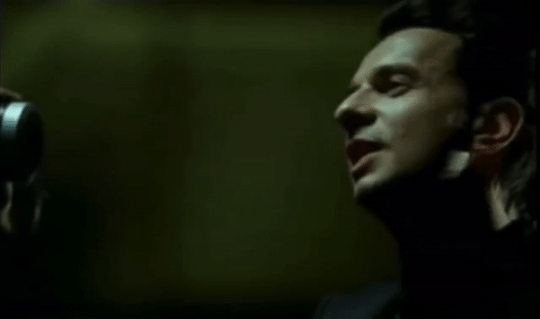

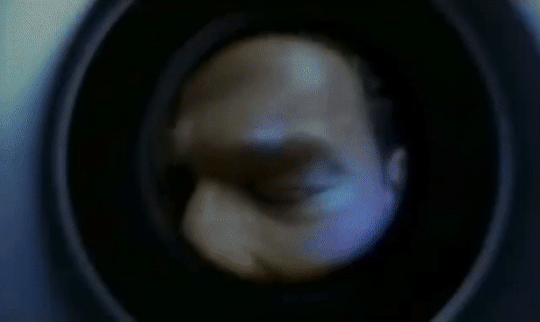

i wanted to use a few gifs from this set bc there’s such a clear difference between the edited and unedited. The original video was super dark and shadowy and although it had that green undertone, overall it was dull and lacked vibrancy in any of the colors. so to get the effect on the right, I raised the exposure and brightness pretty significantly. usually i would also lower the contrast to offset the blackness of the shadows, but that wasn’t working for these and i decided i wanted to keep a bit of the higher contrast look this time (usually i do not). I increased the saturation and vibrance but I also greatly decreased the warmth of the gifs bc the color was originally appearing more yellow, and i wanted a vibrant green instead. i also increased the tint to offset how much the vibrance and saturation effects were turning his face green in the first gig (although i didn’t do this in the second one bc i wanted to leave the green for the effect of him looking through the lens). i also added a dark vignette effect on the gif with the lens thing bc i wanted to amplify the effect of it looking like a lens, and also offset the increased brightness.
bc I don’t use photoshop or ezgif to edit my gifs, my process is more like messing with a bunch of sliders with different effects until i get the look i want. however I do use ezgif just to convert the files from video clippings into actual gifs (the final step of my method). what I do in ezgif is a whole other discussion bc i am still figuring it out… as of now i just increase the frame rate and optimize my gifs for static background, and then compress slightly as needed to reduce the sometimes large file sizes caused by increasing the frame rate. it’s worth it though, i don’t seem to lose much quality and the higher frame rate makes my gifs less choppy which has been an issue i’ve noticed in the past. anywho, moral of the story is, i have a bit of an unusual method for making gifs that i hope some of you might find interesting to hear me ramble about :)
#side note i actually do kind of know how to make gifs in photoshop ish#like i’ve made a few in there before and they turned out pretty well i just don’t have that kind of time on my hands#making them in photoshop took me ages and i also don’t enjoy it as much#even though my method is a bit weird and strange i find it much more fun :)#every single gif is different and i dont edit any of them exactly the same way which is what i think makes it fun#anywho thank u for tagging me delta i rly enjoyed rambling abt this and i never realized how different those dave gifs looked#after editing them wow#also if anyone is wondering how i edit my gifs i shit u not i just my phone#my phone has a pretty remarkable array of aspects of the photo i can edit and although they’re a bit simpler and therefore#don’t have as much variability in what effects you can get.. i can still get a lot of different effects if i finess things just right#which is what i find fun#anywho that’s enough of me rambling hddjhrjdjrg
4 notes
·
View notes
Text
Does traffic-related air pollution increase risk of dementia?
https://sciencespies.com/environment/does-traffic-related-air-pollution-increase-risk-of-dementia/
Does traffic-related air pollution increase risk of dementia?

Higher exposure to a certain type of traffic-related air pollution called particulate matter may be linked to an increased risk of dementia, according to a meta-analysis published in the October 26, 2022, online issue of Neurology®, the medical journal of the American Academy of Neurology. Researchers specifically looked at fine particulate matter, PM2.5, which consists of pollutant particles of less than 2.5 microns in diameter suspended in air. The meta-analysis included all available studies on air pollution and risk of dementia.
“As people continue to live longer, conditions like dementia are becoming more common, so detecting and understanding preventable risk factors is key to reducing the increase of this disease,” said study author Ehsan Abolhasani, MD, MSc, of Western University in London, Canada. “Since a report by the World Health Organization showed that more than 90% of the world population is living in areas with higher than recommended levels of air pollution, our results provide more evidence for enforcing regulations for air quality and accelerating the transition from fossil fuels to sustainable energies.”
For the meta-analysis, researchers reviewed 17 studies. Participants were over age 40. Across all the studies there were more than 91 million people. Of those, 5.5 million people, or 6%, developed dementia.
The studies adjusted for several factors that affect a person’s risk of dementia including age, sex, smoking, and education.
Researchers compared rates of air pollution exposure for people both with and without dementia and found that people who did not develop dementia had a lower average daily exposure to fine particulate matter air pollutants than people who did have dementia. The U.S. Environmental Pollution Agency (EPA) considers average yearly exposures up to 12 µg/m3 to be safe.
Researchers found that the risk of dementia increased by 3% for every one microgram per cubic meter (µg/m3) increase of fine particulate matter exposure.
“While our meta-analysis does not prove that air pollution causes dementia, it only shows an association, our hope is these findings empower people to take an active role in reducing their exposure to pollution,” Abolhasani said. “By understanding the risk of dementia through exposure to air pollution, people can take steps to reduce their exposure such as using sustainable energy, choosing to live in areas with lower levels of pollution and advocating for reduced traffic pollution in residential areas.”
They also looked at nitrogen oxides, which form smog, nitrogen dioxide, and ozone exposure, but did not find significantly increased risk when these other classes of pollutants were considered alone.
A limitation of the meta-analysis was the small number of studies available on this specific topic. Abolhasani said more studies are needed.
Story Source:
Materials provided by American Academy of Neurology. Note: Content may be edited for style and length.
#Environment
#10-2022 Science News#2022 Science News#acts of science#Earth Environment#earth science#Environment and Nature#everyday items#Nature Science#New#News Science Spies#October 2022 Science News#Our Nature#planetary science#production line#sci_evergreen1#Science#Science Channel#science documentary#Science News#Science Spies#Science Spies News#Space Physics & Nature#Space Science#Environment
2 notes
·
View notes
Text
Does Metformin, a glucose-lowering drug, hurt the kidneys?
Metformin is a biguanide compound that reduces blood sugar mainly by reducing hepatic glucose output, improving insulin resistance, and reducing glucose absorption in the small intestine. It is currently one of the world's most widely used oral hypoglycemic drugs. Drug safety evaluation studies have found that Metformin has a good safety profile, no carcinogenic or mutagenic effects, and no evidence that Metformin can increase the risk of lactic acidosis. Medicilon has a professional team and experience in preclinical drug safety evaluation services, providing high-quality data and a fast turnaround time to support all drug safety evaluation studies.
Many patients are concerned about the effects of long-term metformin use on the kidneys. The drug does not directly damage the kidneys but can lead to drug accumulation when taken by patients with existing kidney damage. Both the Chinese Guidelines for the Prevention and Treatment of Type 2 Diabetes (2017 edition) and the Expert Consensus on the Clinical Application of Metformin (2016 edition) suggest that Metformin is the drug of choice for the treatment of type 2 diabetes in the absence of contraindications and intolerance, and should always be retained in the glucose-lowering regimen.
1, Benefits of Metformin.
Metformin can reduce hyperglycemia with no hypoglycemic effect on those with regular blood sugar; the drug has the following benefits in addition to hypoglycemia.
(1), Metformin has the effect of reducing body weight.
(2) Metformin has apparent cardioprotective effects and reduces the risk of cardiovascular disease in newly diagnosed and established type 2, diabetes patients.
(3) Metformin can improve lipid synthesis, metabolism, and lipid profile.
(4) Metformin significantly improved liver serological enzyme profile and metabolic abnormalities in patients with non-alcoholic fatty liver.
2, Adverse reactions and countermeasures
The main adverse reactions of Metformin are diarrhea, nausea, vomiting, gastric distension, and other gastrointestinal responses, which mainly occur in the early stage of treatment (the majority happen in the first ten weeks). Most patients can gradually tolerate them, or their symptoms disappear as the duration of treatment increases. Start taking small doses, gradually increase the amount, adjust the quantity at the right time, take with meals, and choose enteric preparations and other methods, which can reduce gastrointestinal reactions.
Three 、Does Metformin hurt the liver and kidney?
Metformin has no hepatic and renal toxicity; Metformin is absorbed through the gastrointestinal tract for blood circulation, almost does not combine with plasma albumin, does not go through liver metabolism, does not compete with liver P450 enzymes, and does not degrade in the body, but acts directly on the liver and muscle, reducing hepatic glucose isomerism and increasing muscle glucose enzymes. Therefore, Metformin is not hepatotoxic.
Metformin is mainly excreted from the urine in its original form by the kidneys and is cleared rapidly, with approximately 90% clearance in 12-24h. The renal clearance of Metformin is about 3.5 times higher than that of creatinine, and renal tubular excretion is the main route of metformin clearance. Therefore, Metformin itself is not harmful to the kidney.
However, caution should be exercised when using Metformin in people with impaired liver and kidney function. Metformin should be avoided when serum transaminases exceed three times the upper limit of normal, and patients with renal insufficiency need to adjust the dose by estimating the level of glomerular filtration rate. Clinicians or pharmacists can assess the above.
4, long-term use of Metformin, the need for appropriate supplementation of vitamin B12
Studies have shown that: the incidence of vitamin B12 deficiency in glucose patients using Metformin is 5.8%, while the incidence of vitamin B12 deficiency in glucose patients not using Metformin and people without diabetes is 2.4% and 3.3%, respectively. Therefore, long-term metformin users should monitor vitamin B12 concentration regularly and increase the intake of vitamin B12-rich foods appropriately (vitamin B12 is mainly contained in animal proteins, such as meat, animal liver, fish, shellfish, eggs, etc.) to prevent and correct vitamin B12 deficiency. If this condition occurs, vitamin B12 should be supplemented in an appropriate amount under the guidance of professional doctors.
Five 、Stop taking Metformin 48 hours before and after doing a CT examination
Diabetic patients should stop taking Metformin 48 hours before and after doing enhanced CT because it is necessary to play contrast agent before doing CT. The contrast agent belongs to macromolecular substances excreted through the kidneys. If you retake Metformin, it will increase the burden on the kidney and cause contrast nephropathy.
6, the icing on the cake: combined with other glucose-lowering drugs
There are several different drugs when taking glucose-lowering drugs, often more than Metformin. This is because the combination of glucose-lowering medications mutually increases the hypoglycemic effect, improves insulin resistance, or reduces adverse reactions.
All diabetic patients should choose the appropriate hypoglycemic drugs according to their different conditions and pay attention to the indications and contraindications of each type of drug. At the same time, it is essential to emphasize that diet therapy and diet control are the cure for diabetic patients and must be adhered to for life. Diet therapy should not be relaxed or abandoned because of oral hypoglycemic drugs or increased dosages of hypoglycemic medications.
3 notes
·
View notes
Text
I think I've mentioned my interest in voice acting once or twice. That's just so genuinely curious profession and art form.
Now, I'm not that gifted when it comes to voice modulating, modeling or whatnot. I'm good at mimicking; like, I can go significantly higher or lower, when mimickng someone avisto, but cannot do so otherwise. My range is also quite limited.
But it's not about me for once.
When voice acting changed for reasons it should change in it's entirety; here's what I mean.
In "Craig of the Creek" Craig at some point matures and so does his voice. I don't know how it is handled in English dub but in mine, he just gets new voice actor. His new actor is not great but at least he's *consistent*. When we have flashbacks or something; it's still his new voice actor, not the old one. You don't randomly jump back and forth.
Sometimes voice actors change or mature. That's normal. What matters to me is that you either have one or the other. If actor is unavailable, you either wait for him or edit him out of existence. Don't mix. It's horrible.
In League of Runterra, Kai'sa has different voice actor than in Leauge. That's annoying to *me* because I know both voice overs and one is done better than the other (no shade to voice actress but she's just inferior). Same applies to Taliyah (which actually causes psychic damage to me because LoL Taliyah is just *chef's kiss*).
Now, the thing that pisses me off the most and is most egregious. And painful. Elsword. When I started playing in circa 2009-2010, we complained about voice acting and wanted Korean voice over. Then the huge fucking Gameforge fuck up and our server was German dub for 6 months. Not a single quick fix. But then - the horror. After 6 months, important updates, new voice overs... New actors that sounds nothing like previous ones and are appaling quality. Seen more so in newer characters because sometimes they are quiter or louder, sometimes they speak intangible nonsense, they stutter or have some other voice defects - if not health wise, then technology wise. It's fucking horrible. Eventually, we got Korean voiceover in options. All is good.
I wanted to go on a memory lane yesterday (with my broken headphones because fuck me) and I wanted to rip my ears off. I cannot prove it in any way shape or form, but Rena has just striaght up 3 different actors. They didn't bother to change voice lines from previous actor from 9 years ago. Now that's just fucking pathetic. One character, 3 voices.
Original actor was always a-okay (at least for Rena), especially now with all the memories and need to reminiscent. But the other 3? (or her aging up if it is the same girl, which is not likely but still - quit ciggarets girl) Change your profession, you're bad at this and Zeus Almighty save us. Also, Gameforge could really get their subjects either better studio or better something, quality has no business being this bad.
I also know how hard translation can be (have y'all seen ancient greek?) but get yourself better people for translating shit too. I know some words like 'Burst' have no translation, or words like 'Force' have awkward translations, but it can be done - I promise.
Yes, this is me distracting myself from my problems because I know if I think about them for a second too long, I will straight up kill myself.
2 notes
·
View notes
Text
Exploring the Role of Video Marketing in Modern Branding
In today's fast-paced digital landscape, the role of video marketing in modern branding has become increasingly prominent and impactful. With the proliferation of smartphones, social media platforms, and streaming services, video has emerged as a dynamic and versatile medium for businesses to connect with their audience, tell their brand story, and drive engagement like never before.
Video marketing offers businesses a unique opportunity to capture the attention of consumers in a visually compelling and immersive way. Whether it's a short promotional clip, an informative tutorial, a behind-the-scenes glimpse, or a heartfelt testimonial, videos have the power to convey messages with emotion, authenticity, and creativity, making them more memorable and persuasive than traditional text or static imagery alone.
Moreover, with the rise of platforms like YouTube, Instagram, TikTok, and Facebook Watch, video content has become increasingly accessible and shareable across a wide range of channels, allowing brands to reach audiences wherever they are and whenever they're most receptive.
In addition to its ability to captivate audiences, video marketing also offers unparalleled opportunities for engagement and interaction. From interactive shoppable videos to live streaming Q&A sessions, businesses can leverage the interactive nature of video to foster meaningful connections with their audience, solicit feedback, and even drive direct sales.
Furthermore, the scalability and versatility of video content make it suitable for businesses of all sizes and industries. Whether you're a multinational corporation or a small startup, video marketing can be tailored to suit your budget, goals, and target audience, making it a highly accessible and effective tool for modern branding.
In this blog, we'll delve deeper into the role of video marketing in modern branding, exploring its benefits, best practices, and creative strategies for success in today's digital world.
1. The Rise of Video Marketing: A Game-Changer in Modern Branding
In recent years, video marketing has emerged as a formidable force in the realm of modern branding. With the proliferation of digital platforms and the ever-increasing consumption of online content, video has become the preferred medium for businesses seeking to engage with their audience in a more immersive and impactful way.
The rise of video marketing can be attributed to several factors. Firstly, advancements in technology have made it easier and more affordable than ever for businesses to create high-quality video content. From smartphones equipped with sophisticated cameras to user-friendly editing software, the barriers to entry for video production have significantly lowered, democratizing the medium and empowering businesses of all sizes to leverage its potential.
Moreover, the changing preferences of consumers have played a crucial role in driving the adoption of video marketing. Today's audiences are inundated with a constant stream of content from various sources, making it increasingly challenging for brands to capture and maintain their attention. Video, with its ability to convey information quickly and engagingly, offers a solution to this challenge, allowing brands to cut through the noise and make a memorable impression on their audience.
Furthermore, the rise of social media platforms and video-sharing websites has provided businesses with unparalleled opportunities to distribute their video content to a global audience. Platforms like YouTube, Instagram, Facebook, and TikTok have become hubs for video consumption, offering businesses the ability to reach and engage with their target demographic across multiple channels and touchpoints.
2. Understanding the Impact: How Video Marketing Shapes Brand Perception
Video marketing plays a crucial role in shaping brand perception by allowing businesses to convey their message, values, and personality in a more dynamic and visually compelling way. Unlike text-based content, which can sometimes feel static and impersonal, video has the power to evoke emotion, spark curiosity, and forge a deeper connection with the audience.
One of the key ways in which video marketing shapes brand perception is through storytelling. By telling stories that resonate with their audience's aspirations, challenges, and values, businesses can create a narrative that humanizes their brand and fosters a sense of empathy and understanding. Whether it's through testimonials, behind-the-scenes footage, or branded documentaries, storytelling allows businesses to convey their brand message in a way that is relatable and authentic.
Moreover, video marketing enables businesses to showcase their products or services in action, providing potential customers with a more immersive and experiential understanding of what they have to offer. Whether it's through product demonstrations, tutorials, or user-generated content, video allows businesses to demonstrate the value and utility of their offerings in a way that is both informative and entertaining.
Furthermore, video marketing can play a crucial role in shaping brand perception by fostering a sense of community and belonging among customers. By creating video content that encourages interaction, collaboration, and participation, businesses can cultivate a loyal following of brand advocates who feel personally invested in the success of the brand. Whether it's through live streams, Q&A sessions, or interactive polls and challenges, video allows businesses to engage with their audience in real-time and build meaningful relationships that extend beyond transactional interactions.
3. Crafting Compelling Video Content: Strategies for Captivating Audiences
Crafting compelling video content requires a strategic approach that takes into account the unique characteristics of the medium and the preferences of the target audience. Here are some strategies for creating video content that captivates audiences and drives engagement:
Know your audience: Before creating any video content, it's essential to have a clear understanding of your target audience, including their demographics, interests, preferences, and pain points. By tailoring your content to resonate with your audience's needs and desires, you can ensure that your videos are relevant and engaging.
Tell a story: One of the most powerful ways to captivate audiences is by telling a compelling story. Whether it's a narrative-driven commercial, a branded documentary, or a behind-the-scenes look at your company's culture, storytelling allows you to connect with your audience on an emotional level and leave a lasting impression.
Keep it concise: In today's fast-paced digital landscape, attention spans are shorter than ever. To ensure that your videos hold your audience's attention, it's essential to keep them concise and to the point. Aim to convey your message in as few words as possible, and avoid unnecessary filler or fluff.
Be authentic: Audiences are increasingly skeptical of traditional advertising tactics and are drawn to brands that are authentic and genuine. When creating video content, strive to be authentic and transparent, and avoid coming across as overly promotional or salesy. Showcasing real people, real stories, and real experiences can help you build trust and credibility with your audience.
Optimize for mobile: With the majority of video content now being consumed on mobile devices, it's essential to optimize your videos for a mobile-first experience. This means ensuring that your videos are formatted correctly for smaller screens, load quickly, and are easy to navigate and interact with on mobile devices.
4. Leveraging Video Platforms: Maximizing Reach and Engagement
In today's digital age, there is no shortage of platforms and channels for distributing video content. From social media platforms like YouTube, Facebook, and Instagram to video-sharing websites like Vimeo and TikTok, businesses have a plethora of options for reaching and engaging with their target audience.
When it comes to leveraging video platforms, it's essential to understand the unique characteristics and audience demographics of each platform to maximize reach and engagement. Here are some tips for effectively leveraging video platforms:
Choose the right platform: Not all video platforms are created equal, and what works on one platform may not necessarily work on another. Before deciding where to distribute your video content, take the time to research and understand the demographics, interests, and behavior of each platform's audience. This will help you choose the platforms that are most likely to resonate with your target audience and achieve your marketing objectives.
Optimize for each platform: Each video platform has its own set of technical specifications and best practices for optimizing video content. Whether it's aspect ratios, video lengths, or captioning requirements, it's essential to tailor your videos to meet the specific requirements of each platform to ensure that they perform well and are well-received by your audience.
Engage with your audience: One of the key advantages of video platforms is their ability to facilitate two-way communication between brands and their audience. Take advantage of this by actively engaging with your audience through comments, messages, and live chats. Encourage your audience to like, share, and comment on your videos, and respond promptly to any feedback or questions they may have.
Analyze and iterate: As with any digital marketing strategy, it's essential to analyze the performance of your video content regularly and iterate based on insights gained. Pay attention to metrics such as views, watch time, engagement, and conversion rates, and use this data to refine your video strategy over time.
5. Measuring Success: Metrics and Analytics in Video Marketing Strategy
Measuring the success of your video marketing efforts is essential for understanding what's working, what's not, and how you can improve your strategy moving forward. By tracking key metrics and analyzing performance data, you can gain valuable insights into the effectiveness of your video content and make data-driven decisions to optimize your strategy for maximum impact.
Here are some key metrics and analytics to consider when measuring the success of your video marketing strategy:
Views: Views are one of the most basic metrics for measuring the reach of your video content. However, it's essential to look beyond total views and consider metrics such as unique views,
FAQs
FAQ: Why is video marketing important for modern branding?
Answer: Video marketing has become increasingly important in modern branding due to its ability to capture and retain audience attention more effectively than text or static images. Videos allow brands to convey their message in a dynamic and engaging format, enabling them to connect with their audience on a deeper level and leave a lasting impression.
FAQ: How can video marketing enhance brand visibility and awareness?
Answer: Video marketing offers a versatile platform for brands to showcase their personality, values, and unique selling points. By creating compelling video content that resonates with their target audience, brands can increase their visibility across various digital channels, including social media, websites, and video-sharing platforms, thereby raising awareness and generating interest in their products or services.
FAQ: What types of video content are most effective for modern branding purposes?
Answer: The effectiveness of video content for modern branding depends on the goals and preferences of the target audience. However, some popular types of video content include product demonstrations, behind-the-scenes footage, customer testimonials, explainer videos, and branded storytelling. Each type of video serves to engage viewers, build trust, and reinforce brand messaging in unique ways.
FAQ: How can brands measure the success of their video marketing efforts?
Answer: Brands can measure the success of their video marketing efforts using various metrics, including views, engagement (likes, comments, shares), watch time, conversion rates, and ROI. By tracking these metrics across different platforms and campaigns, brands can gain insights into the effectiveness of their videos in achieving specific marketing objectives and make data-driven decisions to optimize future efforts.
FAQ: What are some best practices for integrating video marketing into a broader branding strategy?
Answer: When integrating video marketing into a broader branding strategy, it's essential to align video content with the brand's overall messaging, values, and visual identity. Additionally, brands should prioritize quality production, storytelling, and audience targeting to ensure that their videos resonate with viewers and support their brand objectives effectively. Regularly analyzing performance metrics and seeking feedback from the audience can also help brands refine their video marketing strategy over time for optimal results.
Conclusion
In conclusion, the role of video marketing in modern branding cannot be overstated. Throughout this blog, we've delved into the various ways in which video content has become an indispensable tool for businesses looking to build their brand, connect with their audience, and drive engagement in today's digital landscape.
Firstly, video content offers unparalleled opportunities for storytelling and emotional connection. By leveraging the power of sight, sound, and motion, businesses can create immersive experiences that captivate audiences, evoke emotions, and leave a lasting impression, thereby forging deeper connections with consumers and fostering brand loyalty.
Secondly, video has emerged as a preferred medium for consuming content across digital platforms. With the rise of social media, streaming services, and mobile devices, video has become the dominant form of communication online, making it essential for businesses to incorporate video into their branding efforts to stay relevant and competitive.
Moreover, video content has proven to be highly engaging and shareable, making it an effective tool for amplifying brand reach and virality. Whether it's entertaining, educational, or inspirational, compelling video content has the potential to resonate with audiences on a massive scale, driving organic reach and engagement across social networks and digital channels.
Additionally, video marketing offers measurable results and insights that enable businesses to track the performance of their campaigns and optimize their strategies for maximum impact. From view counts and engagement metrics to conversion rates and ROI, the analytics provided by video platforms empower businesses to make data-driven decisions and continuously improve their branding efforts over time.
Ultimately, by embracing the role of video marketing outlined in this blog, businesses can elevate their branding efforts, connect with their audience on a deeper level, and differentiate themselves in a crowded marketplace, ultimately driving growth and success in the digital age.
0 notes
Text
The Power of Sensor Fusion
March 29, 2024
by dorleco
with no comment
Autonomous Vehicle Technology
Edit
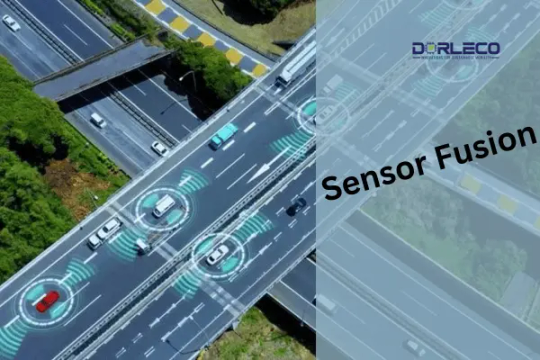
Introduction
Multiple sensors with different specifications, operating circumstances, and ranges are needed for autonomous vehicles. Though they are susceptible to weather variations, cameras and vision-based sensors aid in the provision of data for recognizing specific objects on the road. Radar sensors are excellent in practically all weather conditions, but they cannot produce a precise three-dimensional representation of the environment. LiDAR sensors are costly, yet they provide a highly accurate map of the vehicle’s surroundings.
The Need for Integrating Multiple Sensors
Although each sensor has a distinct function, an autonomous car cannot use either one of them on its own. An autonomous car needs information from several sources to increase accuracy and gain a greater grasp of its surroundings if it is expected to make decisions that are comparable to—or, in some situations, even superior to—those made by a human brain.
Sensor fusion, therefore, becomes a crucial element.
Sensor Fusion
In essence, sensor fusion refers to using all of the information gathered from the sensors positioned throughout the body of the car to inform judgments. This mostly aids in lowering the level of uncertainty that could otherwise be there when using individual sensors.
As a result, this combination aids in addressing each sensor’s shortcomings and creating a strong sensing system. In typical driving situations, sensor fusion typically increases system redundancy significantly. This indicates that different sensors are picking up on the same objects.
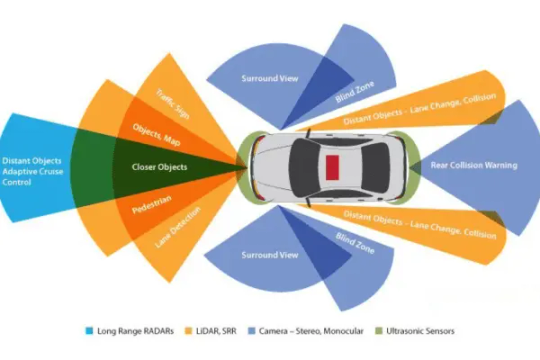
However, fusion helps guarantee that no items are missed when one or more sensors are inaccurate. For example, in perfect weather, a camera can record the surroundings of a moving car. That being said, the camera won’t give the system enough information when there is a lot of fog or rain. Here’s where LiDAR sensors and radar come in handy. In addition, a radar sensor might precisely detect the presence of a truck at the intersection where the vehicle is stopped at a red light.
It might not be able to produce data from a three-dimensional perspective, though. This is a necessity for LiDAR. Therefore, while in perfect circumstances having many sensors detect the same thing can appear redundant, in edge cases such as poor weather, sensor fusion is required.
Levels of Sensor Fusion
1. Low-Level Fusion, or Initial Fusion:
When using this type of fusion method, all of the data from all of the sensors is combined into one computer unit before it is processed. For instance, to determine the size and form of an item spotted, pixels from cameras and point clouds from LiDAR sensors are fused. Since this method transmits all of the data to the processing unit, it has a wide range of potential uses. As a result, different algorithms might make use of distinct data elements. The intricacy of processing is a disadvantage of transporting and managing such massive volumes of data. The cost of the hardware configuration will increase since high-quality processing units are necessary.
2. Fusion at the Mid-Level:
In mid-level fusion, the algorithm utilizes the data after the individual sensors have initially spotted the objects. This data is typically fused using a Kalman filter (described later in the course). The idea is to have, let’s say, a camera and a LiDAR sensor detect an obstacle individually and then fuse the results from both to get the best estimates of the vehicle’s position, class, and velocity. Although this is a simpler procedure to execute, if a sensor fails, there is a possibility that the fusion process will not succeed.
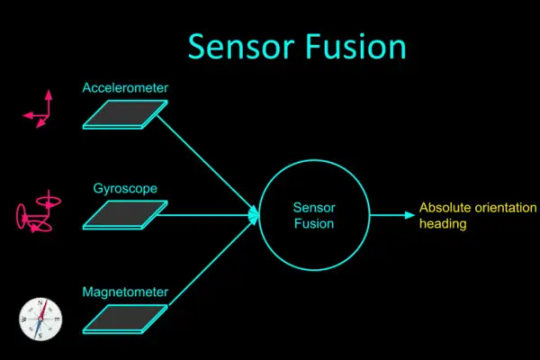
3. High-Level Fusion (Late Fusion):
This is comparable to the mid-level approach, with the exception that we fuse the outcomes after implementing detection and tracking algorithms for every single sensor. The issue is that the fusion as a whole could be impacted if there are tracking issues with one sensor.
Additionally, there are various kinds of sensor fusion. To maintain consistency, competitive sensor fusion involves having different types of sensors generate data on the same object. Through the employment of two sensors, complementary sensor-fusion will be able to create a larger picture than either sensor could on its own. Coordinated fusion will raise the data’s quality. For instance, to create a 3D representation of a 2D object, take two distinct viewpoints of it.
Variation in the approach of sensor fusion
1. Radar-LiDAR Fusion
Sensor fusion cannot be solved by a single method since different sensors have diverse functions. The mid-level sensor-fusion approach can be applied if a LiDAR and radar sensor need to be fused.
This entails combining the elements and concluding afterward.
This method can make use of a Kalman filter. This involves using a “predict-and-update” technique, in which the predictive model is updated to produce a better result in the following iteration depending on the previous prediction and the current measurement.
The following illustration illustrates this in an easier-to-comprehend manner.

The problem with the radar-LiDAR sensor is that LiDAR data is linear, whereas the data from the radar sensor is non-linear. Therefore, before being fused with the LiDAR data, the non-linear radar sensor data must be linearized, and the model is then updated appropriately.
An extended Kalman filter or an unscented Kalman filter can be used to linearize the radar data.
2. Fusion of Camera and LiDAR
Now, low-level fusion—which combines raw data—as well as high-level fusion—which combines objects and their positions—can be applied to systems that require the fusion of a camera and a LiDAR sensor. In both situations, the outcomes differ somewhat. The ROI (region of interest) matching technique and data overlap from both sensors make up the low-level fusion. The things in front of the vehicle are detected using the camera’s pictures, while the 3D point cloud data of the objects obtained from the LiDAR sensor is projected on a 2D plane.
Next, we superimpose these two maps to see if there are any common regions. The same object, identified by two separate sensors, is indicated by these similar regions. Data is first processed for high-level fusion, after which 2D camera data is transformed into 3D object detection. Following a comparison of this data with the LiDAR sensor’s 3D object detection data, the output (IOU matching) is determined by where the two sensors’ intersecting regions are.
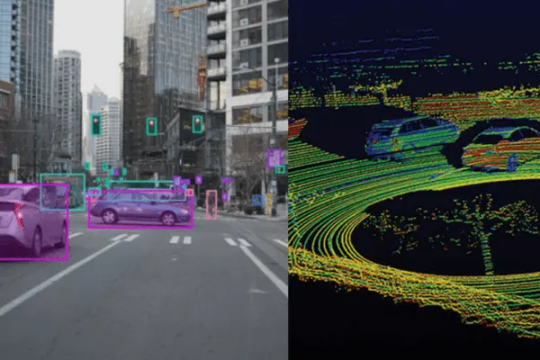
Development of Autonomous Vehicle Features at Dorleco
Among the many things we do at Dorleco is develop sensor and actuator drivers. We can help you with full-stack software development or custom feature development.
Please send an email to [email protected] for more information about our services and how we can help you with your software control needs. You can also connect with us for all VCU-related products.
0 notes
Text
The Impact of Tech on Language Translation
Technology has brought unprecedented advancements to the translation and interpretation industry. But how is the industry adapting to these changes?
Language barriers are one of the world's oldest problems. But what if we could break them down without having to learn new languages? That is the vision behind What is techogle? translation technologies like neural machine translation (NMT), which uses artificial intelligence to translate text into other languages.
NMT has significantly improved the quality and fluency of translations compared to traditional phrase-based CAT tools. It can also provide more natural-sounding translations, as well as better handling of complex sentences and idioms. Its rapid response times are another major benefit, especially when it comes to mobile applications.

But it is important to note that even with the best NMT systems, the human element is still required to ensure high-quality translations. This is why post-editing of translated output is crucial, and it will continue to be a necessary aspect of translation and interpretation services for the foreseeable future.
The other way tech has changed the translation industry is through automation of translation tasks. This has reduced the amount of manual labor needed to complete a task, and it can also help increase productivity. But while this has increased efficiency, it has also decreased the demand for some translation and interpretation jobs. It has also opened up the door to new job roles for people with specialized skills, such as machine learning engineers.
However, these new technological website advances are causing some translators and interpreters to fear being replaced by machines. It is important to note that NMT and interpreting tools do not understand cultural nuances and cannot replace the human touch needed to deliver effective communication. It is therefore necessary to have both human and automated translations work together to achieve the ultimate goal of eliminating language barriers.
A recent technological advance that has helped bridge the gap between different cultures and languages is remote interpreting. It is a powerful tool that connects linguists with customers in real-time. This is possible thanks to technologies such as popular videoconferencing platforms and smartphones, which have lowered the barrier of accessibility to interpreting services.
In addition, augmented reality (AR) and voice-to-text translation are two of the latest trends that have been revolutionizing the translation and interpretation industry. These technologies allow for a more immersive experience by letting users see and hear translations in their environment, which can make traveling to foreign countries much easier. They can also help businesses reach their target audience in a more efficient manner and boost brand awareness.
As the technology in the translation and interpretation industry continues to evolve, it will likely open up the door to more innovation. This is a good thing, as it will ultimately improve the quality of translations and enable more people to engage with each other in a universal language. In the meantime, translators and interpreters should stay up to date on these tech developments and take advantage of the benefits they bring to their profession.
1 note
·
View note